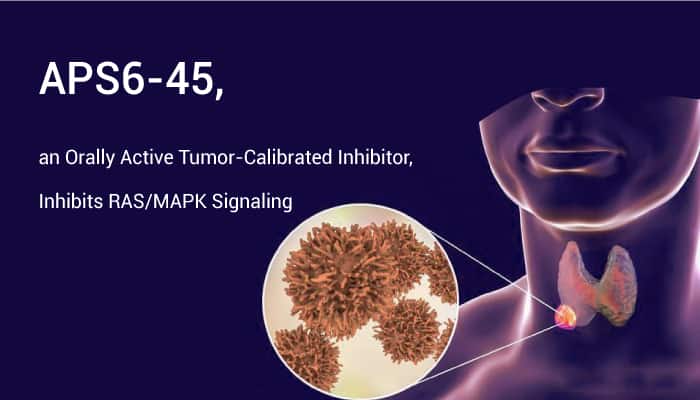Medullary thyroid cancer is a form of thyroid carcinoma which originates from the parafollicular cells, which produce the hormone calcitonin. Synthetic tailoring of approved drugs for new indications is often difficult, as the most appropriate targets may not be readily apparent and therefore few roadmaps exist to guide chemistry. As a result, researchers report a novel class of ‘Tumor Calibrated Inhibitors’ with unique polypharmacology and strongly improved therapeutic index in fly and human MTC xenograft models. APS6-45 suppresses the growth of human medullary thyroid carcinoma (MTC) cells. Oral administration of APS6-45 strongly improves overall ptc>dRetM955T adult survival. APS6-45 rescues ptc>dRetM955T flies to a remarkable 84% overall viability.

APS6-45 strongly suppresses this anterior rough eye phenotype both in pupae and in rescued adults. Indeed, APS6-45 exhibits only a small decrease in vitro MKNK1 binding relative to Sorafenib. These results further indicate that APS6-45 strongly inhibits Ret-mediated transformation with minimal whole animal toxicity. APS6-45 strongly inhibits RAS pathway signaling in human MTC cell lines TT and MZ-CRC-1. Furthermore, APS6-45 strongly suppresses colony formation of TT cells in soft agar when compared with Sorafenib.
Oral dosing of APS6-45 (one-eighth of this dose; 20 mg/kg p.o.) reaches a concentration of approximately 10 µM in blood plasma. APS6-45 also demonstrates a relatively long half-life (5.6 hours) and overall pharmacokinetic parameters similar to Sorafenib. Strikingly, administration of APS6-45 inhibits the growth of established TT tumors in the subcutaneous tissue of xenografted nude mice far more potently than Sorafenib or Cabozantinib. Overall, APS6-45 treatment leads to partial or complete responses in 75% of dosed mice.